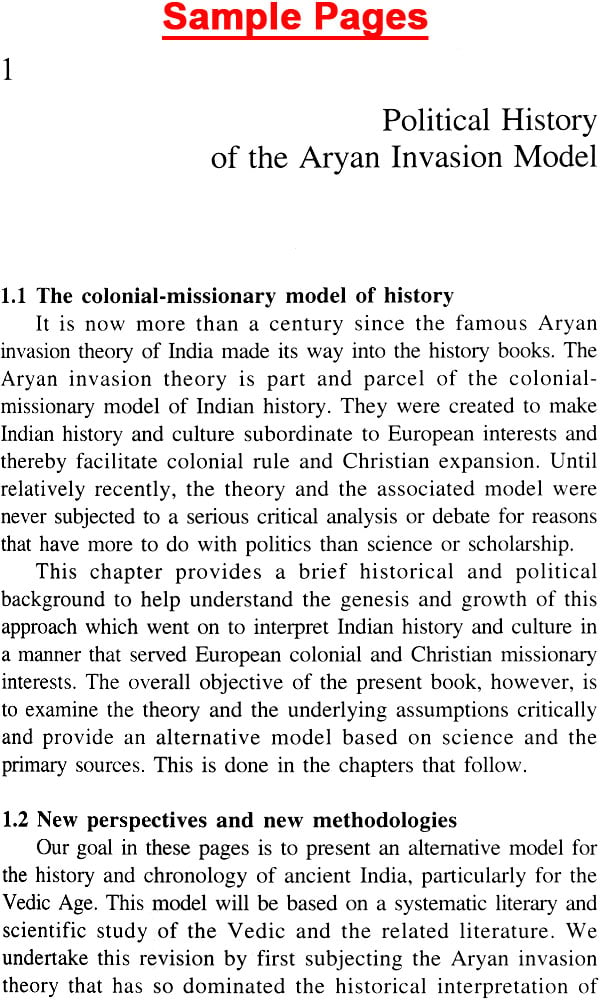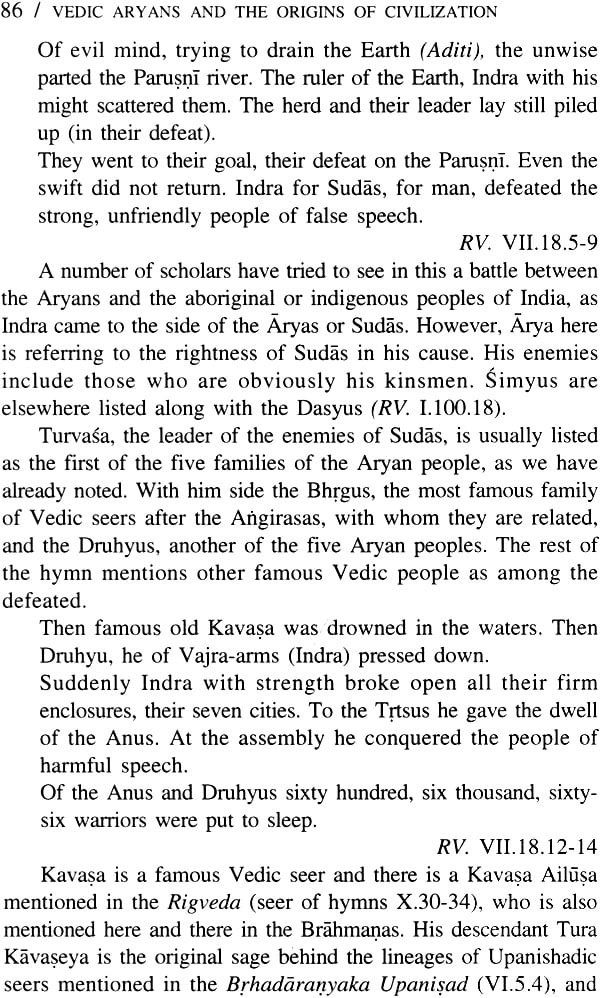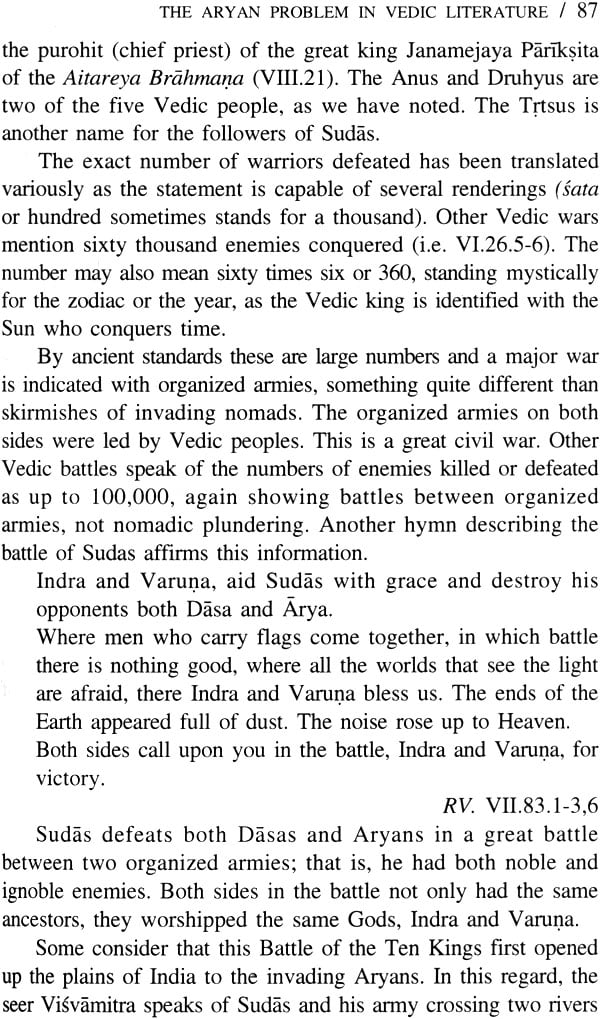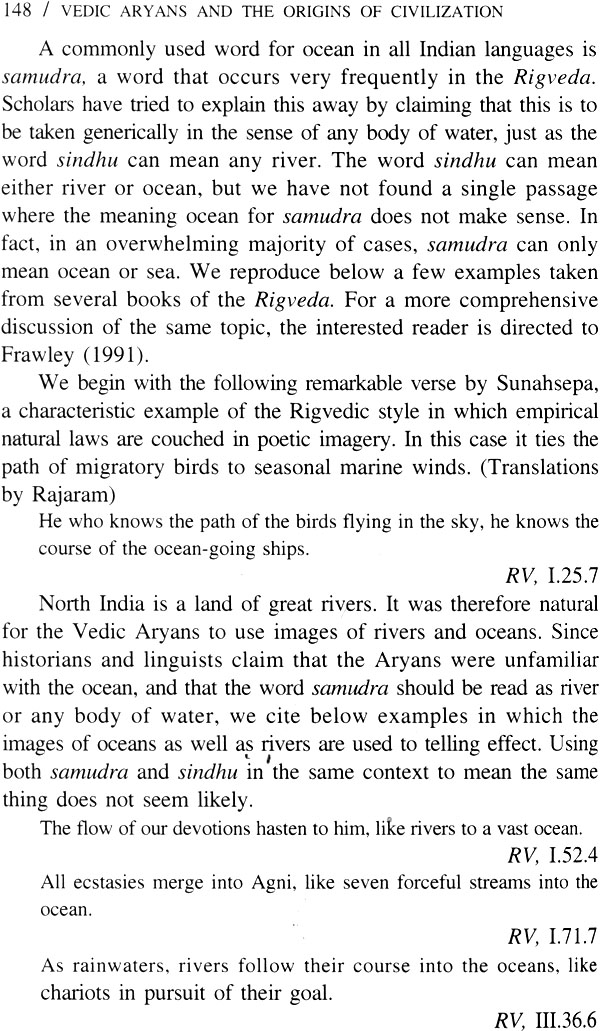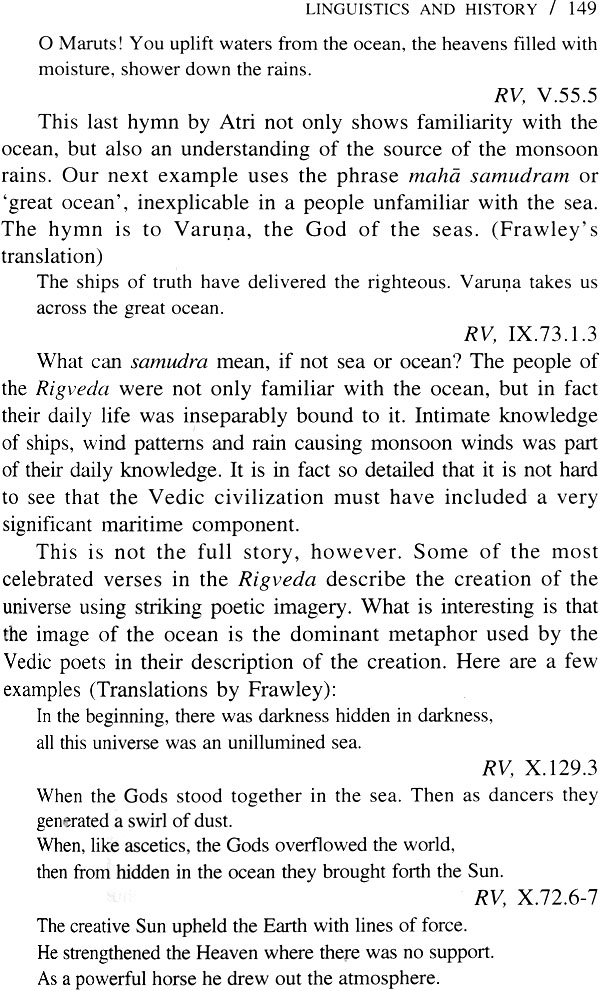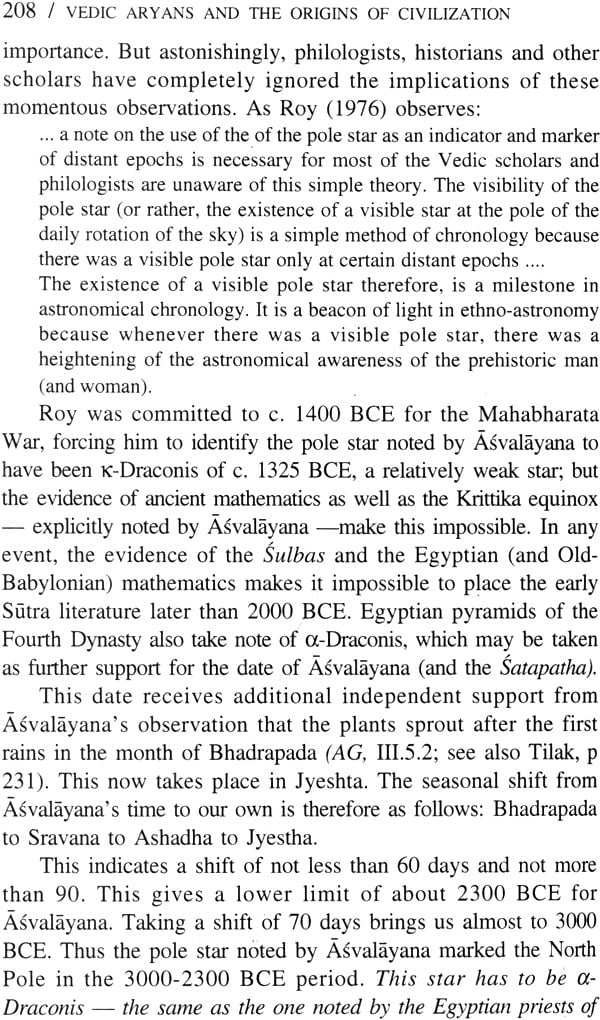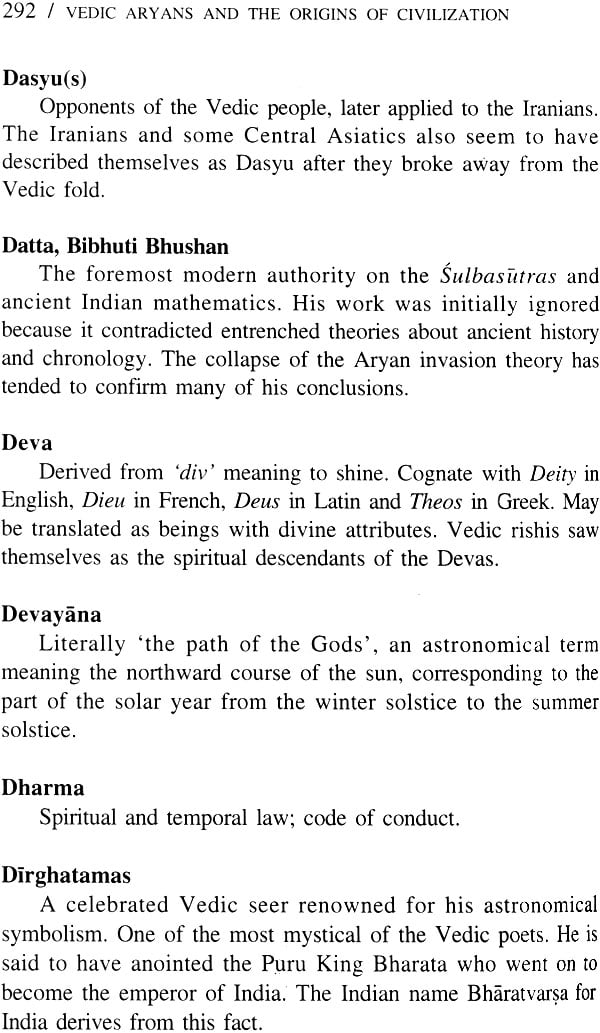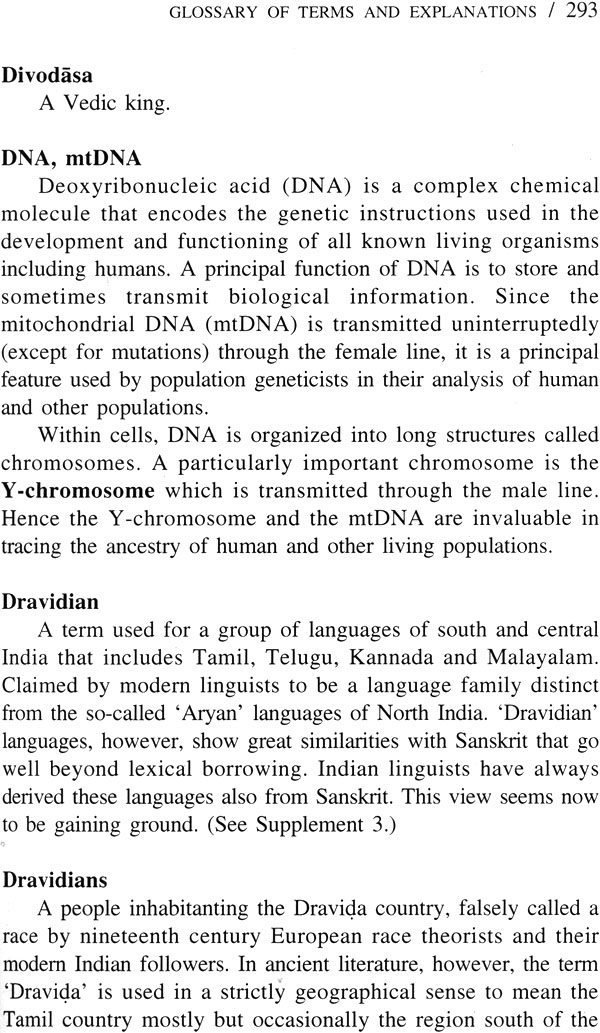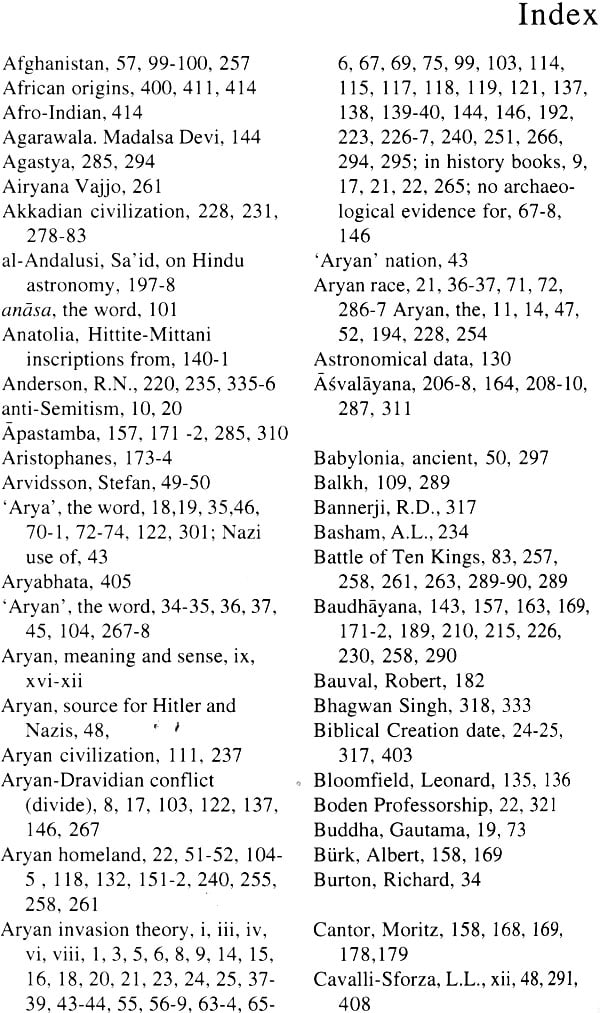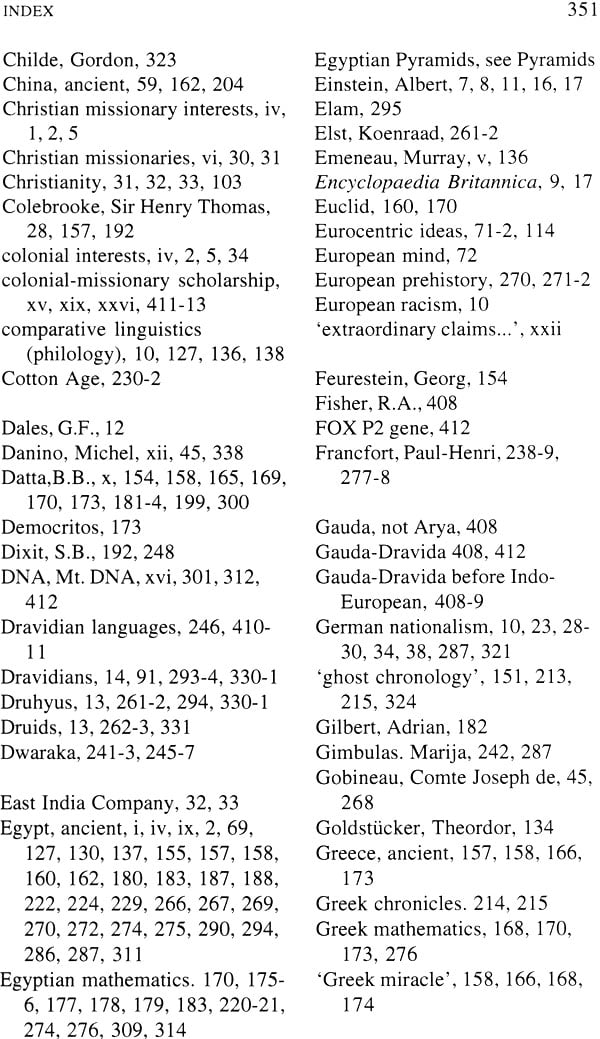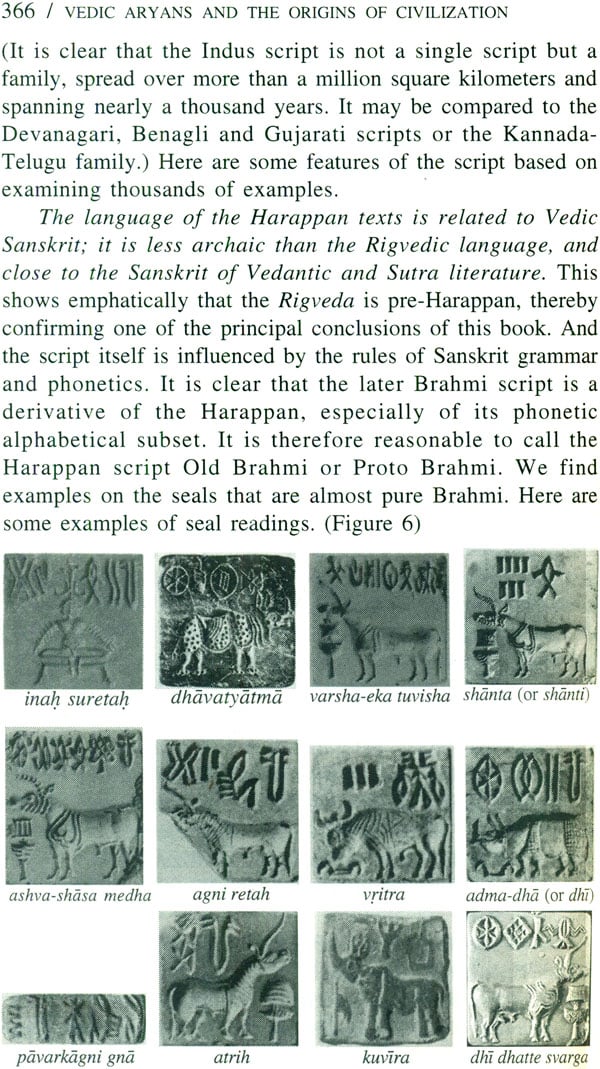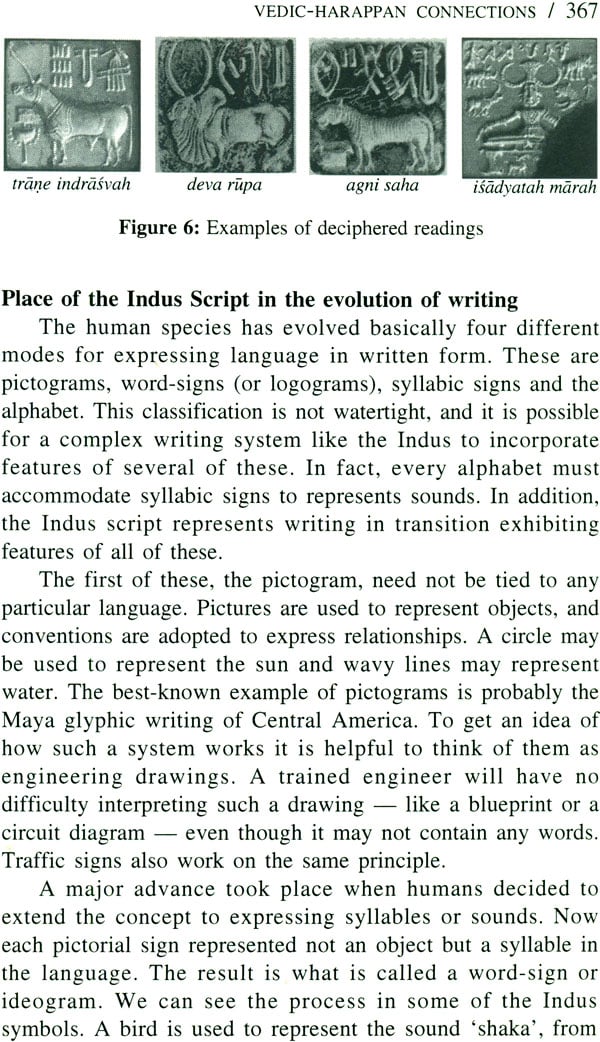
Vedic Aryans and the Origins of Civilization
Book Specification
| Item Code: | NAM973 |
| Author: | Navaratna Rajaram and Davind Frawley |
| Publisher: | Voice of India New Delhi |
| Language: | English |
| Edition: | 2018 |
| ISBN: | 9788185990965 |
| Pages: | 446 |
| Cover: | Paperback |
| Other Details | 8.5 inch X 5.5 inch |
| Weight | 590 gm |
Book Description
This is the fourth edition of the acclaimed work first published nearly twenty years ago. In this significantly expanded edition, the authors summarize the progress to date and set the stage for future research by incorporating recent discoveries in natural history like the Toba explosion 75,000 years ago. This allows them to show Vedic ideas and language to be late Pleistocene and early Holocene evolutionary phenomena that made their way to Europe some 10,000 years ago leaving their imprint on the languages and cultures of Europe. This provides a scientific explanation for the 200 year-old puzzle of why Indian and European languages are related. All these make the present edition the definitive work covering the discoveries of the last three decades and the starting point for all future work in the area following the collapse of the Aryan invasion myth.
Dr. Navaratna Rajaram is a mathematical scientist and linguist who after more than twenty years in the U.S. academia and high technology industry turned his attention to ancient history. He was the first to show connections between Vedic mathematics and Harappan archaeology. Later he teamed up with the Vedic scholar the late Dr. Natwar Jha to give a rational solution to the identity of the Harappan language and script. He pioneered the use of natural history and genetics to ancient civilization, which appears for the first time in this book. He is also a researcher in Vedanta applied to foundations of quantum physics.
Dr. David Frawley (Pandit Vamadeva Shastri) is a Vedic scholar and philosopher with seminal contributions to ancient Indian history and prehistory. He was among the first to show that the Rigveda describes a maritime society and not one of steppe nomads. He also pointed out that the Vedic civilization in India originated in the coastal regions of peninsular India and later moved to the Sarasvati region. He is the author of several books on yoga and Vedic spirituality. He is one of the few Westerners to be recognized as a Vedacharya by the leading spiritual centers in India.
In the twenty years since the appearance of the first edition of Vedic Aryans and the Origins of Civilization (1995, World Heritage Press, Quebec, Canada), the field has changed almost beyond recognition. The Aryan Invasion Theory (AIT) is all but dead, and except for a few diehards who have created an Aryan Migration Theory (AMT) to mask the failure of the AIT, the Harappan civilization (Indus Valley Civilization or IVC) is recognized for what it is - a derivative and part of the Vedic civilization in the broadest sense from the Samhitas and Upanishads to the epics and the Puranas. Despite the immense scope of this connection, the Vedic- Harappan relationship can be summarized in just a few words: Harappan archaeology represents the material remains of the culture, civilization and the thoughts found in this vast Vedic literature. Quite appropriately, scholars and institutions including the Indian National Museum now call it the “Indus- Sarasvati” or the “Sarasvati-Sindhu” civilization.
We next take a brief look at the changes as chronicled in the previous three editions and touch on new developments that motivated the present, fourth edition.
To return to our book, the first edition was written at a time when the shadow of the Aryan Invasion Theory (AIT) hung heavily over the field: it was the ruling paradigm and our book was among the first to question it on both scientific and literary grounds. As we noted in the Preface to the first edition, our goal in the book was “... to offer both an alternative model and an alternative approach to ancient history.” This we did first by examining ancient records and noting that the maritime world described by the Rigveda is incompatible with the lifestyle of the supposedly nomadic ‘Aryans’ of the Eurasian steppe described by the advocates of the AIT or AMT. We noted also that Harappan archaeology is replete with Vedic symbolism suggesting that it was influenced by Vedic thought and religion.
Following up on this Vedic-Harappan connection, the book went on to provide a chronological landmark by comparing the Vedic mathematics of the Sulbasutras with the mathematics of Old Babylonia and the Egyptian Middle Kingdom. This made the Harappan Civilization overlap in time with the Sutra period of the Vedic Age. This naturally placed the Vedas, the Rigveda in particular before the Harappan or the Indus Valley Civilization. This served as a step towards integrating Harappan archaeology and the Vedic literature - a step that was seen as more radical then than it may seem today.
In the second edition we went beyond refutation of old ideas like the Aryan invasion and presented new archaeological findings suggesting the existence of an earlier layer of civilization in Europe before the rise of Egypt and Mesopotamia. We hinted that it might be attributed to the Indo-Europeans whose languages and culture carry the imprint of Indian languages and spiritual ideas. This is firmed up in the present volume on the basis of new data from natural history and population genetics, something that was not available at the time. We give a brief account of this in Supplement 3 but caution we still have a long way to go. As just noted, this constitutes a significant new addition that could well be the starting point for future works.
The third edition published in 2001 represented a more radical departure. To begin with, it was no longer possible to deny the obvious Vedic symbolism contained in Harappan artifacts, even if the validity of the solution to the Harappan language and script proposed by N. Jha and N.S. Rajaram may be disputed. Their critics sought to divert attention from this while focusing on the supposed ‘consensus’ that the Harappans had to be non-Vedic and non-Sanskritic without offering any reasons for the claim. This separation, which was both diachronic and synchronic, owed more to academic inertia and bias than solid evidence.
With the benefit of hindsight one can see that beginning with the first edition, the new light shed on ancient India was the fruit of collaboration between scholars approaching from two quite different perspectives - literary-symbolic and scientific. The symbolism of the Vedas pervades Harappan archaeology including its iconography thereby testifying to their unity. Natwar Jha’s discovery of the Mahabharata describing the icons and their Vedic symbolism bears further testimony to this unity. (Described in Appendix to Chapter 2)
The decade since the publication of the third edition has brought dramatic changes to the field, most notably in the arrival of natural history and population genetics as major factors in the evolution of the ancient world of both people and languages. To begin with, it has settled once and for all the question of any invasion or migration in the late ancient age as postulated in the Aryan Invasion Theory. Further, it has allowed us to make precise the notion of Indo-European people and their language(s). This is found to bear no resemblance to the IE or the PIE postulated by linguists in the past.
This is a major new development and one of the main reasons for bringing out the fourth edition. While several books are likely to be written on this development, it is far too important a subject to ignore even in this book. Hence a brief summary of these findings and their ramification for the topics covered in the book is given in Supplement 3. From all this it may be seen that the present edition is not just a revision, but constitutes a significant rewriting of the previous edition. Significant parts of the previous editions are retained because they contain a critical analysis of highly influential beliefs and methods that have sustained history writing for well over a century. Thus they serve as a critical record of a phase of historical writing that will be useful as a source for future historians.
Though not obvious at the time, the approach of combining the symbolic (or spiritual) and the scientific may be seen as a step towards to a new paradigm that has since been taken up by others. Among these Michel Danino, Kamlesh Kapur, Sanjeev Sanyal and Saroj Bala deserve note while others will doubtless follow. We are heartened to note that all these recognize the Aryan Invasion/Migration to be the false doctrine it is.
Viewed in this light, the present (fourth) edition may be seen as marking the close of one phase of historical research and writing based on colonial and early post-colonial ideas while opening the window to a new phase based on natural history, genetics and associated subjects. The Introduction, the two Appendixes and the Supplements have been added with this transition in mind. The next book on the subject will in all likelihood have to start from here and follow a different course. We give a glimpse of what that new direction might be in the Introduction and the Supplement 3.
Old Theories, New Facts, Changed Landscape
Changed landscape
A nineteenth century Indologist like F. Max Muller looking at the historical landscape as it stood twenty years ago would have had little difficulty relating to it, either its substance or its method. But were he to arrive today, a mere twenty years later, he would be lost in the maze of new discoveries that have changed the landscape beyond recognition. Coincidentally perhaps, these two decades happen to be marked by the first edition of Vedic Aryans and the Origins of Civilization and the present fourth edition. As a result, the four editions taken together may be viewed as a chronicle of the field as it has gone through its most eventful two decades - from being a colonial concoction to a scientific enterprise. The present edition has been written against the background of this transformation.
We recognize that many if not most history books still carry the imprint of the colonial legacy - of seeing the Vedas and the Indian civilization as products of language, literature and ideas brought in by a race of invaders known as Aryans, said to be themselves a branch of a people called Indo- Europeans. Those brought up on this ‘history’ are likely to be no less bewildered by what this book has to say than a Max Muller returned from the dead. This Introduction has been prepared to help readers make the transition from the history they are familiar with to the dramatically changed scene and the developments that led to it. We begin with the following summary of the main features of the transformed scene.
1. The Aryan invasion theory (AIT), the crown jewel of colonial Indology and its advocates in the post-colonial era is dead. The same holds for its short-lived successor the Aryan migration theory (AMT) which sought to preserve all the conclusions of the AIT while claiming to disown the word ‘invasion’; this artifice was to get around the fact it is contradicted by evidence from archaeology and other sources.
2. Science has shown that the term Arya as applied to people or languages has no meaning; Aryans exist neither as an ethnic group nor as a language group. The classical Indian definition (and usage) of Arya as honorable or civilized is the only justifiable meaning. In other words it is an attribute that can be used to describe any people based on their beliefs, values and conduct regardless of race or nationality. Specifically they are followers of some version of Arya Dharma.
3. The people of India, no matter by what label we call them - Arya, Dravida, Adivasi or anything - have lived where they are today for at least 50,000 years, moving and mixing extensively within these confines. Because of this long history of genetic admixture, they cannot be distinguished by their genes. The same is true of caste - there is no connection between caste and genes, which means caste is a much later man-made phenomenon overlaid on an existing, evolved people.
This point needs highlighting since there have been several recent attempts to attribute caste to outsiders - in particular to an invading race who enslaved the natives and relegated them to lower castes. This ‘AIT by the backdoor’ was ‘supported’ by misinterpreting DNA data, often incomplete. This is emphatically disproved by DNA (genetic) evidence. All of us Indians regardless of caste or even if outcaste are cut from the same genetic cloth. Caste is a man made classification that has no biological basis. The ancient Indian description of varna based on occupations and duties (varnashrama) - incorrectly equated with the Portuguese word caste - better describes its development and also does not contradict the findings of science (genetics).
4. The same applies to language with a qualification: it is a product of evolution. Language is a regional phenomenon but unrelated to caste or race. (Brahmins and non-Brahmins in Bengal speak Bengali while people living in Tamil Nadu speak Tamil regardless of caste.) More significantly, Indian languages have evolved within India for at least 50,000 years along with its speakers along regional lines. This means, language is also part of human evolution and is governed by evolutionary laws of nature which are not the same as the rules created by modern linguists.
This too needs some emphasis: linguists have constructed proto-languages like PIE (Proto-Indo-European) based on fragments of existing languages beginning with Sanskrit; they have later gone on to claim PIE as the ancestor of other Indo- European languages including Sanskrit. This is fallacious for of at least two reasons. First, the time scales are greatly different. Where linguists allow only a few thousand years, evolution of Indian languages at least has taken tens of thousands of years. Second, the rules for language change used by linguists are based on superficial comparisons of language fragments and not any scientific theory like evolution. Finally, circular logic is employed in both deriving PIE (say from Sanskrit) and later claiming Sanskrit itself to be a branch of the PIE derived from it. This falls under reduction ad absurdum.
5. The evolution of Indo-European languages and their similarity to Indian languages, especially Sanskrit can be explained on the basis of natural history supported by genetics. Simply put, there were two major waves of humans from South Asia, mainly India, separated by 35,000 years. These are the first Indo-Europeans. The first wave was approximately 45,000 years ago, which went on to form ‘founder groups’ in Eurasia and Europe which were then empty of humans. A second wave followed around 10,000 years ago and carried Sanskrit- related Indian languages and technical terms which were planted on the languages that had evolved with the founder groups from the earlier wave 35,000 years ago. This is the best explanation we have for the affinities between Indian and European languages.
6. ‘Founder group’ is a term from population genetics which refers to a group that successfully settles in a new land and flourishes. The Puritan Pilgrim Fathers may be called a founder group, while the Vikings under Lief Ericsson who went to America earlier but became extinct within a short time were not a founder group. Thus the first wave of Indo-Europeans 45,000 ago led to a founder group.
This means linguists and historians who have followed linguists (and philologists) have very greatly underestimated the time spans involved in the origin and distribution of people and languages of the Old World. While they continue to use thousands of years, nature needs tens of thousands of years to do its work. The whole phenomenon is also much more complex than what linguists have created; they cannot be reduced to simplistic explanations based on invasions and migrations involving just a few thousand years.
This brief summary suffices for our purposes here; a more detailed but still non-technical account is given in Supplement 3.
Battle for India
The scenario just described bears little resemblance to what most of us studied in our history courses and to accounts still found in many, perhaps a majority of history books in print today. The next question is - how did this transformation come about within the last two decades, seemingly uprooting beliefs and theories that had held the fort for nearly two centuries? The fact is, the change, while rapid was not overnight. Nor was it all smooth sailing: it had its turns and twists, debates and personality conflicts until we are now at a point where we can say the changes are irreversible. There will have to be revisions as new data and findings make their way, but there can be no going back to narratives of the colonial era.
This transformed scene is reflected also in the personalities and institutions that dot the academic landscape today. Gone are the giants of comparative religion, linguistics and philology like Max Muller, Whitney, Weber (Albrecht), Keith and a host of others from the nineteenth century and later: they rarely find mention by workers today. Their place has been taken up by natural scientists - palaeo-biologists and population geneticists like Luigi Luca Cavalli-Sforza, Vikram Kashyap, Stephen Oppenheimer, Premendra Priyadarshi, Lalji Singh, V.R. Rao, Sanghamitra Saho and others. Many of these now work closely with historians.
While archaeologists have taken note of this development, philologists and religious scholars whose disciplines once dominated the field have for the most part chosen to ignore it. Their tribe is represented today by a dwindling clique of academics (and non-academics) both in India and the West. These are the remnants of a once prominent school of thought that is on the way to oblivion. They have kept themselves in the public eye more through political activism - like lobbying against change in the California school curriculum and canceling courses taught by those whose ideology happened unacceptable to them.
| Preface to the Fourth Edition | ix | |
| Introduction: Old theories, new facts | xv | |
| 1 | Political History of the Aryan Invasion Model Appendix to Chapter 1: Dissolution of the Aryan Myth | 1-45 |
| 2 | The Aryan problem in the Vedic Literature Appendix to Chapter 2: Mahabharata on the Indus Seals | 55-116 |
| 3 | Linguistics and History | 124 |
| 4 | Vedic Mathematics and the Ancient World | 154 |
| 5 | Astronomy and Chronology | 192 |
| 6 | Vedic India and the Origins of Civilization | 224 |
| 7 | Ecological Basis for the End of the Ancient World | 268 |
| Glossary | 285 | |
| Notes | 317 | |
| Bibliography | 336 | |
| Index | 350 | |
| Supplement 1: Vedic- Harappan Connections | 357 | |
| Supplement 2: Looking Beyond the Aryan Invasion | 374 | |
| Supplement 3: Language Spread, A Natural History | 396 |
